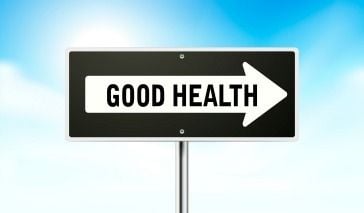Varicose veins are swollen, twisted veins just under the skin. It is true that sometimes varicose veins are just a cosmetic concern. However, in some people the symptoms are so severe that they can interfere with their daily activities. Also, in some cases, varicose veins can lead to other more serious health problems if they are left untreated.
Causes and Symptoms of Varicose Veins
When the valves or walls of a vein are weak or damaged, blood can leak backwards through the valve. This leads to blood collecting in the vein, which gives it a swollen, twisted look. This also leads to other symptoms in the legs, such as:
- Throbbing, cramping or pain that worsens when standing or sitting for long periods of time
- Swelling, especially around the foot and ankle
- Irritated or itchy rash
- Darkening of the skin
- Restless legs
Diagnosing varicose veins
A vein specialist will do a medical exam with ultrasound imaging and ask you about your symptoms to diagnose your vein condition. Most people with varicose veins do not have another underlying disease. In some cases, though, another health problem can lead to the same symptoms as varicose veins, such as:
- A blockage in a vein can cause varicose veins to form. This may happen as a result of a blood clot, injury or tumor.
- Heart failure can cause swelling in the feet and ankles.
- Uncontrolled diabetes can lead to ulcers in the lower legs.
Complications of Varicose Veins
Sometimes varicose veins are just a cosmetic concern. If you don’t mind how your legs look and feel, you may be able to put off treatment for several years without any complications. If your symptoms are severe and affect your quality of life then you will need treatment.
In some cases varicose veins can lead to more serious health problems if left untreated, such as:
- Skin ulcers. When blood continues to pool in a varicose vein, it can lead to slow- or non-healing wounds known as ulcers. These wounds may not heal until the varicose vein is treated. Open wounds can also become infected. This condition can be difficult to treat and severely impact your quality of life.
- Bleeding. The skin over a varicose vein can become thin. This makes it easier for the skin to become injured, which can lead to a loss of blood.
- Superficial thrombophlebitis. This is a blood clot that forms in a vein just beneath the skin. It can cause redness of the skin, tenderness and warmth in the vein, or pain and swelling.
- Deep vein thrombosis (DVT). This is a blood clot in a deep vein. Symptoms of DVT in the leg include a “pulling” feeling in the calf, warmth, redness, pain and swelling. However, you may not have any symptoms. If the blood clot breaks free of the wall of the vein, it can travel to the lungs, which can be fatal.
When should you see a doctor for varicose veins
If you have visible signs of varicose veins or are experiencing any of these symptoms, contact your doctor or a vein specialist for a diagnosis and treatment options.
- The vein is swollen, red, or very warm or tender.
- You have a rash or sores on the leg or ankle.
- The skin on the calf and ankle become thicker and changes color.
- You have bleeding from a varicose vein.
- Your symptoms are severe enough that they interfere with your daily activities.
- You are concerned about how your legs look or feel.
Updated Oct. 13, 2017


